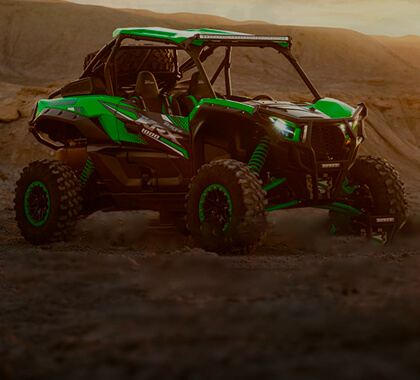What to Look Out for When Buying Kawasaki KRX 1000 Push-to-Talk (PTT)?
Open Microphone vs. Push-to-Talk
The two most popular microphone setups for most applications include an open mic or the good old push-to-talk mic. An open mic stays open all of the time which means that you won’t have to press any buttons as this is pretty much like talking on a phone, you are always heard. Even though this does have its advantages, a PTT button is much better as it keeps the line quiet and the only time you’ll hear any voices is when you have to. Navigating the intense terrains common to Kawasaki KRX 1000 adventures means high ambient noise levels. For an open mic, that can be extremely distracting which is why most people will always go for a reliable PTT system.
Ease of Use
Driving your Kawasaki KRX 1000 over rocks, dunes, and snow hills is exhilarating, and you want an easy-to-understand comms system with that. A PTT button for the KRX 1000 should be intuitive, easily reachable, and simple to operate. You shouldn’t have to look to see if you are pressing the right button as the entire PTT system should always prioritize muscle memory. Whether it's positioned on the steering wheel or a dedicated spot on the dash, the button should stand out, yet seamlessly integrate with the KRX's ergonomic design. A responsive switch, clearly distinguished from other in-cabin controls, ensures that in the heat of the moment, your communication remains unhampered.
Durability and Resilience
Kawasaki KRX 1000 adventures are synonymous with adrenaline and unpredictability, and most people are likely to press the PTT button dozens if not hundreds of times every day. Thus, a PTT button designed for this beast must mirror its resilience. Prioritize waterproof and dust-resistant designs, anticipating muddy trails and dusty routes. Given the intensity of KRX 1000 rides, the button should be robust, sealed from the elements, and poised to perform flawlessly, be it a leisurely exploration or an intense race.
Wiring and Connectors
The true challenge with the Kawasaki KRX 1000's dynamic movement, especially if you opt for a steering-mounted PTT, is the meticulous wire management. You need to make sure all of your cables are safely routed and that they won’t get dangled. It’s best to hide these behind paneling as safely as you can as that is going to keep them secure from outside elements as well. This prevents any potential snags or damage, ensuring uninterrupted communication. While steering-mounted buttons offer convenience, the position should be chosen based on the rider's preference and the nature of their adventures, keeping safety and functionality paramount.





